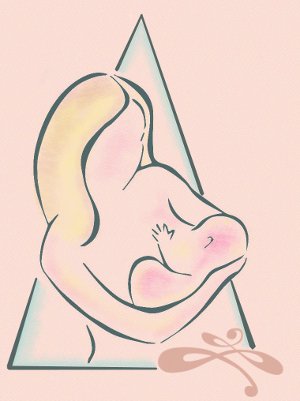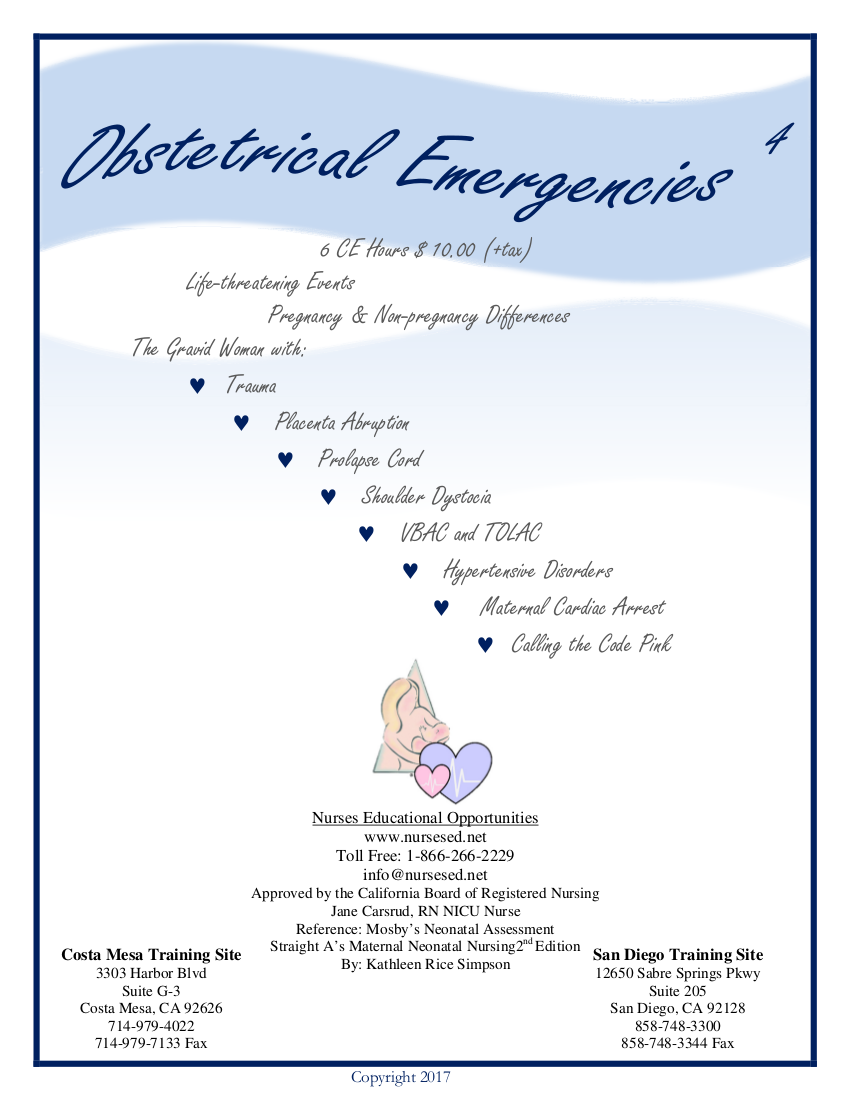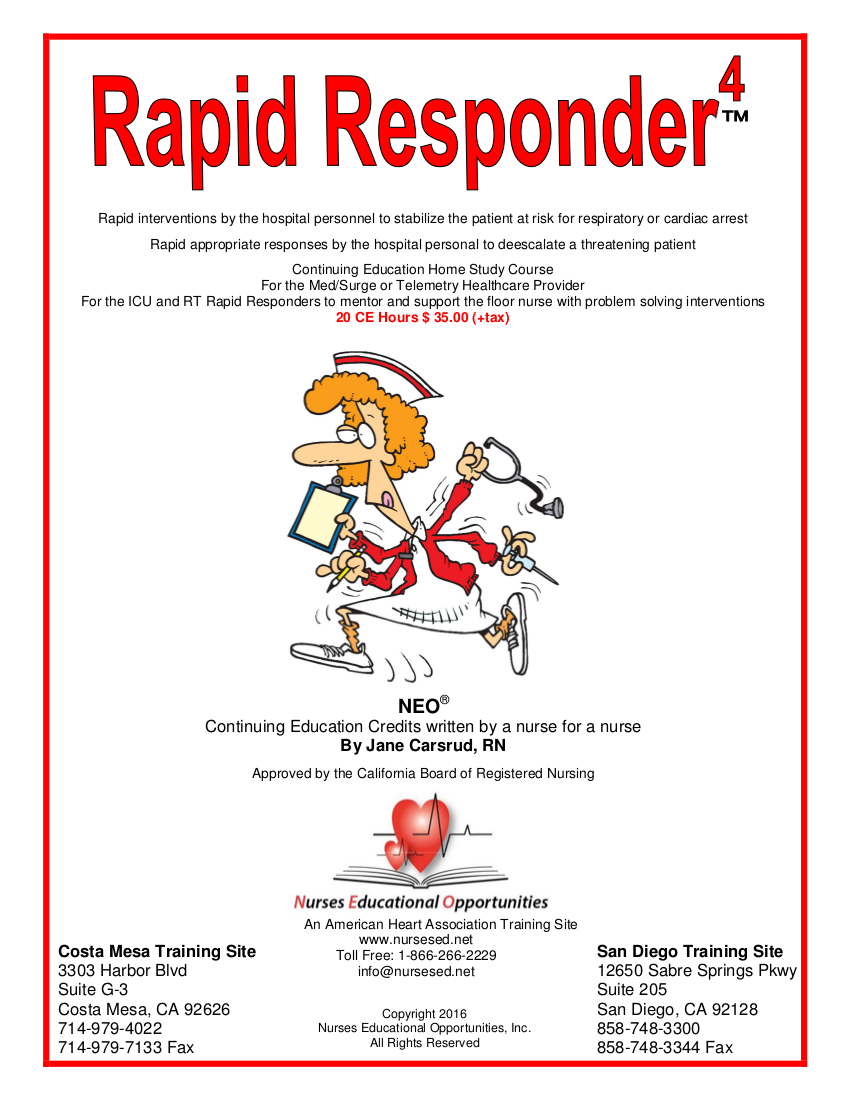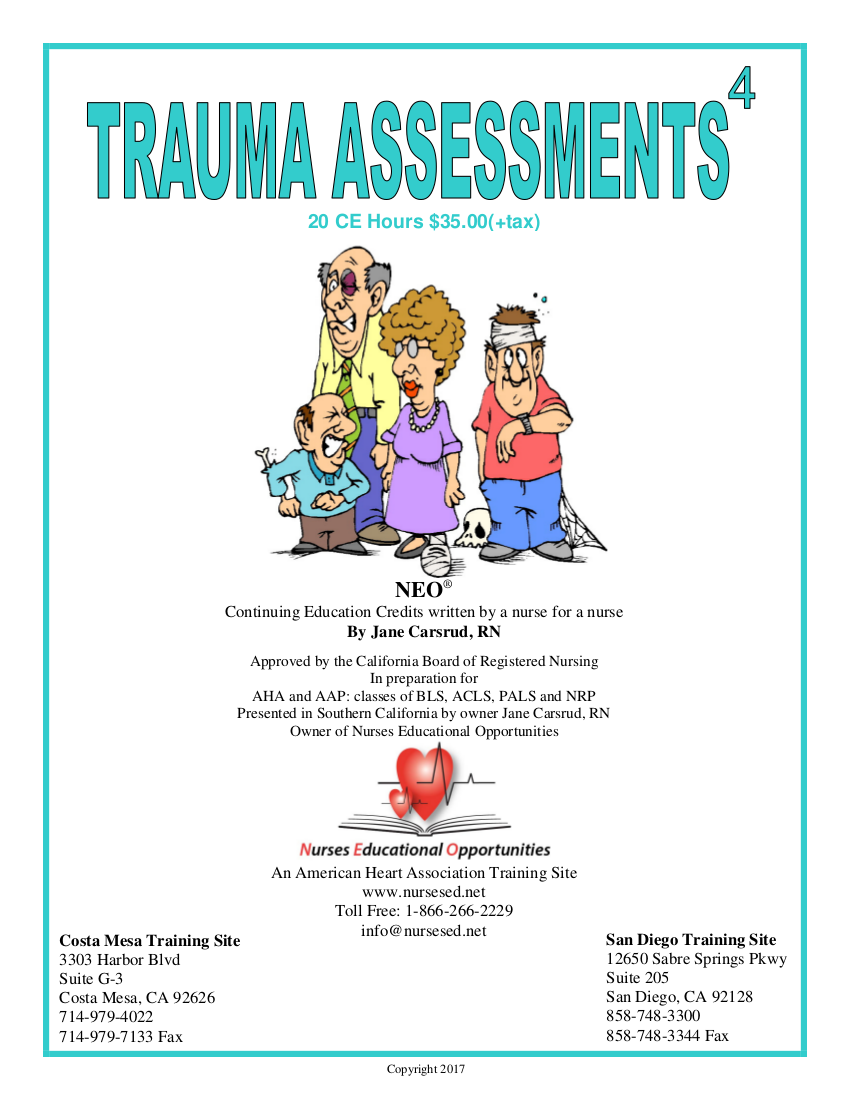
Labor & Delivery Care
This course begins with an overview of
- Labor initiation and components
- The infant passage
- The pelvic structures
- The fetal lie, attitude, position, station, cervical effacement, and dilation
- The preliminary signs of labor
- The First Stage of Labor begins with the Latent Phase to include
- True labor versus false labor
- Confirmation of rupture of membranes
Course Details
Duration: 4 hrs
CEs: 6 CEs
Cost: $115
Textbook: INCLUDED
Pre-Requisites
No clinical experience is required.
This Program is for you if you are enrolled in a Nursing Program, or you have graduated from a Nursing Program in the past.
New Grads/Re-entry Nurses are welcome to enroll!
Transfer Nurses who would like to enter Labor & Delivery Care should enroll in this class!
The course will cover:
- The First Stage Labor also includes the Active Phase with Cultural factors that influence the care of the laboring gravid woman
- The initial assessment and the Leopold Maneuver
- The blood test that needs to be determined.
- The First Sage of Labor also includes the Descent Phase with
- Labor support by the nurse and the father
- Positioning and ambulation
- Preparation of delivery
Materials
 Classroom Course
Classroom Course
Labor & Delivery Care, by Jane Carsrud
The textbook is INCLUDED if you are taking the classroom course for Labor & Delivery Care.
Purchase Textbook ONLY
You can also purchase the textbook ONLY, and use it for 5 Continuing Education units.
Price: $10
Class Schedule
NEO Orange County
NEO San Diego
Class Objectives
The Second stage begins with active pushing which includes
- The Latent phase when the fetus continues to passively descend and rotate to the anterior position.
The Descent Phase is characterized by strong urges to push - The Transition Phase occurs when the presenting part is on the perineum
Forceps and vacuum assist may be needed
Umbilical cord prolapse and shoulder dystocia and their interventions are covered
The Third Stage of Delivery last from the expulsion of the baby and delivery of the placenta
The signs of placental separation is covered
Cesarean Sections are covered with risk and management.
Inductions of labor with risk and management are covered Pain relief of non- pharmacologic and pharmacologic agents are discussed
Upon completion of this course the participant will be able to:
- Discuss the factors included in the initial assessment of a woman in labor
- Describe the ongoing assessment of maternal progress during the first, second and third stage of labor
- Recognize the physical and psychosocial findings indicative of maternal progress
- Describe fetal assessment during labor
- Identify signs of developing complications of labor and birth
- Identify nursing interventions for each stage of labor and birth
- Examine the influenced of cultural and religious beliefs and practices of the process of labor and birth
- Describe the role and responsibilities of the nursing during an emergency childbirth
- Identify the effects of perinatal trauma. Goal: Labor and birth are natural processes. Most women do well with support and minimal selected interventions. The minimal intervention philosophy acknowledges that most pregnancies, labor and birth are normal and interventions create the potential for maternal-fetal injuries. A philosophy of minimal interventions works best. Reference: Perinatal – Lowdermilk




